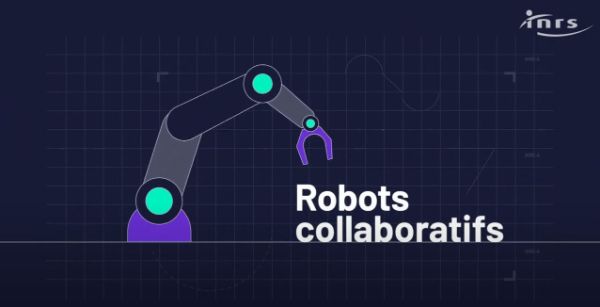Collaborative robots in the company environment
Prevent risks in man-robot co-activity
Presented as key for competitiveness, collaborative robots are of great interest to manufacturers. However, collaborative robotics raises the question of man-machine co-activity and the associated risks. To address the main concerns related to the integration of this new technology, the French national research and safety institute (INRS) conducted studies and today proposes information material intended for companies.
A collaborative robot is meant to work at close range with operators or directly with them. The difference with traditional robots lies in this desire for co-activity which aims to partly or completely remove the physical barrier between humans and robots, so that they can interact.
Risks to be identified upstream…
As with any machine, these robots have moving elements (arms, clamps, tools, parts being handled) that can hurt operators operating nearby. The risk of musculoskeletal disorders, collisions, burns, cuts, etc. can also be accompanied by psychological constraints (stress, mental overload).
The introduction of such devices also brings major changes both in the company’s organisation and in its core business and the content of employees’ activities which must be taken into account. This is why an analysis of the needs and risks must be systematically performed before these devices are implemented. Some small collaborative robots misleadingly give the impression that everything will be easy and without risk.
… To bring suitable prevention solutions
Different solutions, related to the characteristics of these robots (weight, bulk, etc.) and their work at close range with operators (safety-rated monitored stop, speed and distance control, power control, etc.) can be envisaged.
These technical solutions must be associated with organisational solutions: training (development of new skills), activity monitoring (change in physical and psychosocial constraints) and organisational change (adaptation of the work, modification of the work station, re-arrangement of collective work).
In order to incorporate these good prevention practices as early as possible in the occupational risk prevention approach, INRS has made different resources available to companies. Discover the English versions of a video and information sheet which present the main risks associated with this new technology and the suitable solutions.
Collaborative robots : an INRS expertise
For several years now, INRS has developed recognised expertise in occupational health matters related to automated systems and man-machine interactions. The Safety of work equipment and automated systems laboratory studies, in particular, collaborative robotics and is regularly commended at European and international level.








